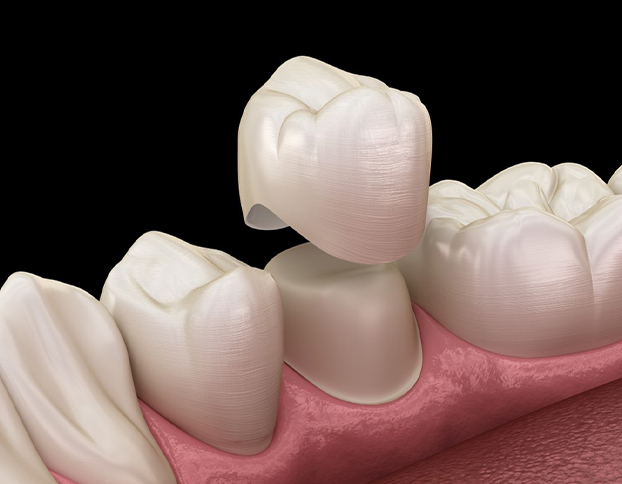Dental Crowns

Dental Crowns and Dental Bridges
To address tooth decay, dental professionals often begin with a filling as the initial treatment. However, more severe decay may necessitate more extensive repair methods. In such cases, dentists may opt for a dental crown or cap.
At Cedar Grove Dental Group serving Cedar Grove and nearby areas, we offer dental crown treatments designed to restore teeth with significant damage. These custom-sized caps fit over affected teeth, providing robust restoration. Our practice specializes in dental crowns and restorations for patients dealing with broken, damaged, or decayed teeth. Contact us at (973) 857-0567 to schedule an appointment for your dental concerns today.
Understanding Dental Crowns
According to the American College of Prosthodontists, one of the most frequent dental restorations is the single dental crown. Dentists employ dental crowns in various treatment scenarios, such as safeguarding vulnerable teeth against decay progression, capping damaged teeth, or covering deep fillings. Crowns are also used to finalize dental implants or to protect teeth that have undergone root canal therapy. Working closely with their dental laboratory and patients, dentists craft custom-fitted dental crowns that restore a tooth's shape and size to near perfection.
“Dentists can work with their dental lab and the patient to create custom-fitting dental crowns that may restore a tooth’s shape and size to near perfect.”
How Dental Bridges Function Alongside Dental Crowns
It's common for patients to receive dental crowns as part of a dental bridge procedure. According to WebMD, dental bridges are used to fill gaps left by missing teeth. When a patient has a single missing tooth, dentists create an appliance that anchors to the two adjacent teeth. This process involves reshaping the two abutment teeth to securely hold the dental bridge, which includes removing much of the enamel. Dental crowns are placed on the reshaped abutment teeth, providing support for the new artificial tooth that fills the gap in the middle of the bridge.
“The dentist must reshape the two abutment teeth to secure the dental bridge.”
Reasons for Patients to Receive a Dental Crown
Some patients opt for dental crowns to prevent further damage or decay in a tooth or to preserve a visually appealing smile. Crowns also play a crucial role in averting tooth loss, which can otherwise lead to additional oral health issues and costly dental procedures. Additionally, patients may choose crowns to maintain a proper bite and prevent teeth from shifting.
“Crowns also help prevent tooth loss that could lead to additional oral health problems and more expensive dental work.”
Step-by-Step Guide to Receiving a Dental Crown
Getting a dental crown typically involves multiple appointments and is often integrated into a broader dental treatment plan, such as alongside a root canal. Here's a step-by-step outline of the dental crown procedure:
- Initial Assessment: Before starting the dental crown process, any existing dental issues like infections or cavities are treated. If replacing an old crown, remnants are removed beforehand.
- Tooth Preparation: The tooth is then prepared by reshaping it to accommodate the crown. Dental impressions are taken and sent to the lab. Some patients receive a temporary crown at this stage.
- Crown Placement: Upon completion, the patient returns for the crown placement. The dentist checks the fit and appearance before permanently bonding it to the tooth using dental cement.




